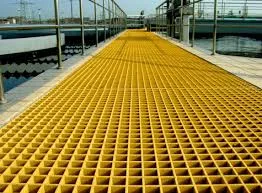
-
 Afrikaans
Afrikaans -
 Albanian
Albanian -
 Amharic
Amharic -
 Arabic
Arabic -
 Armenian
Armenian -
 Azerbaijani
Azerbaijani -
 Basque
Basque -
 Belarusian
Belarusian -
 Bengali
Bengali -
 Bosnian
Bosnian -
 Bulgarian
Bulgarian -
 Catalan
Catalan -
 Cebuano
Cebuano -
 China
China -
 China (Taiwan)
China (Taiwan) -
 Corsican
Corsican -
 Croatian
Croatian -
 Czech
Czech -
 Danish
Danish -
 Dutch
Dutch -
 English
English -
 Esperanto
Esperanto -
 Estonian
Estonian -
 Finnish
Finnish -
 French
French -
 Frisian
Frisian -
 Galician
Galician -
 Georgian
Georgian -
 German
German -
 Greek
Greek -
 Gujarati
Gujarati -
 Haitian Creole
Haitian Creole -
 hausa
hausa -
 hawaiian
hawaiian -
 Hebrew
Hebrew -
 Hindi
Hindi -
 Miao
Miao -
 Hungarian
Hungarian -
 Icelandic
Icelandic -
 igbo
igbo -
 Indonesian
Indonesian -
 irish
irish -
 Italian
Italian -
 Japanese
Japanese -
 Javanese
Javanese -
 Kannada
Kannada -
 kazakh
kazakh -
 Khmer
Khmer -
 Rwandese
Rwandese -
 Korean
Korean -
 Kurdish
Kurdish -
 Kyrgyz
Kyrgyz -
 Lao
Lao -
 Latin
Latin -
 Latvian
Latvian -
 Lithuanian
Lithuanian -
 Luxembourgish
Luxembourgish -
 Macedonian
Macedonian -
 Malgashi
Malgashi -
 Malay
Malay -
 Malayalam
Malayalam -
 Maltese
Maltese -
 Maori
Maori -
 Marathi
Marathi -
 Mongolian
Mongolian -
 Myanmar
Myanmar -
 Nepali
Nepali -
 Norwegian
Norwegian -
 Norwegian
Norwegian -
 Occitan
Occitan -
 Pashto
Pashto -
 Persian
Persian -
 Polish
Polish -
 Portuguese
Portuguese -
 Punjabi
Punjabi -
 Romanian
Romanian -
 Russian
Russian -
 Samoan
Samoan -
 Scottish Gaelic
Scottish Gaelic -
 Serbian
Serbian -
 Sesotho
Sesotho -
 Shona
Shona -
 Sindhi
Sindhi -
 Sinhala
Sinhala -
 Slovak
Slovak -
 Slovenian
Slovenian -
 Somali
Somali -
 Spanish
Spanish -
 Sundanese
Sundanese -
 Swahili
Swahili -
 Swedish
Swedish -
 Tagalog
Tagalog -
 Tajik
Tajik -
 Tamil
Tamil -
 Tatar
Tatar -
 Telugu
Telugu -
 Thai
Thai -
 Turkish
Turkish -
 Turkmen
Turkmen -
 Ukrainian
Ukrainian -
 Urdu
Urdu -
 Uighur
Uighur -
 Uzbek
Uzbek -
 Vietnamese
Vietnamese -
 Welsh
Welsh -
 Bantu
Bantu -
 Yiddish
Yiddish -
 Yoruba
Yoruba -
 Zulu
Zulu
Innovative Applications and Benefits of FRP Sheets in Modern Construction
Understanding FRP Sheets Advantages, Applications, and Future Perspectives
Fiber Reinforced Polymer (FRP) sheets are specialized materials composed of a polymer matrix reinforced with fibers. These composites have garnered attention across various industries due to their exceptional strength-to-weight ratio, corrosion resistance, and versatility. This article delves into the advantages, applications, and future prospects of FRP sheets.
Advantages of FRP Sheets
One of the most significant advantages of FRP sheets is their lightweight nature. Compared to traditional materials such as steel or concrete, FRP offers comparable strength while significantly reducing overall weight. This characteristic is particularly beneficial in applications where weight reduction is critical, such as in aerospace, automotive, and civil engineering.
Furthermore, FRP materials exhibit excellent corrosion resistance, making them ideal for environments with high humidity, chemical exposure, or saline conditions. Unlike metals, which can rust and degrade over time, FRP sheets maintain their integrity and performance, leading to lower maintenance costs and longer service life. This durability also translates into sustainability; by reducing the need for frequent replacements, FRP sheets lower the environmental impact associated with manufacturing and disposing of traditional materials.
Additionally, FRP sheets can be engineered to meet specific requirements. By varying the type of fibers (such as glass, carbon, or aramid) and the matrix used, manufacturers can tailor the properties of the composite—optimizing factors like tensile strength, impact resistance, and thermal stability for a given application.
Applications of FRP Sheets
frp sheet

The versatility of FRP sheets has led to their adoption in a wide range of applications. In the construction industry, FRP sheets are used for strengthening existing structures, such as bridges and buildings, without adding significant weight. Their ability to be easily cut and shaped allows for seamless integration into various building designs.
In the marine sector, FRP materials are preferred for their resistance to saltwater corrosion, making them ideal for boat hulls, docks, and other maritime structures. Similarly, in the automotive industry, FRP components can help reduce overall vehicle weight, contributing to improved fuel efficiency and performance.
Healthcare is another area where FRP sheets are making significant inroads. They are used in the manufacturing of lightweight, durable medical devices and prosthetics, helping to enhance the mobility and comfort of patients.
Future Perspectives
Looking ahead, the demand for FRP sheets is expected to grow as industries increasingly focus on sustainable and efficient materials. Innovations in manufacturing processes, such as the development of new composite formulations and recycling methods, will further enhance the appeal of FRP sheets. Research is also likely to uncover new applications, particularly in renewable energy sectors, where lightweight, durable materials can play a crucial role in the development of wind turbine blades and solar panel frames.
In conclusion, FRP sheets represent a remarkable advancement in material science, offering numerous benefits that make them suitable for a variety of applications. As industries continue to seek out innovative solutions to modern challenges, FRP sheets are poised to play an increasingly important role in the future of construction, transportation, and beyond.









